This is the first in my Beyond the Bluegrass series where I will occasionally feature a band outside the central KY area that are of personal importance to me. My hometown heroes Sir Arthur & Co are just such a band. Grab a cold RC Cola and enjoy! [2020 Shawn Chambers / Lexingtunes]
The sleepy riverside town of Calhoun, KY, may seem an unlikely point of origin for a local rock band signing a major record label contract during the Swinging 60s, but no matter the era or location there will always be individuals achieving the seemingly impossible.
Robert (b. 1949) and Richard Wills (b. 1950) were born into a well-educated and encouraging family. Their father, Landon Wills, was the owner/editor of the McLean County News while mother, Ilene Wills, taught first grade and did her best to maintain a household of six rambunctious boys.
The local newspaper was a true family affair and both Robert and Richard were able to witness first-hand the “power of the press” to both enrage and enlighten their fellow citizens. The small paper was often at odds with the rural population and a remarkable 1963 short film about Landon Wills and the McLean County News succinctly captures the ‘outsider’ atmosphere that sometimes surrounded the family. This certainly influenced the two brothers, but not quite as much as music.
The best opportunity to play music in a small town of roughly 800 people meant the school band where the two brothers marched with Robert on trumpet and Richard on drums. Small towns mean lifelong friends and easy company and as their talents grew so did the talent of many of their classmates. To broaden their musical horizons the boys joined friends in Pep Band where they had a chance to play more jazzy styles.
Of course, radio waves travel and records are a teenage staple. The boys were eclectic in their tastes with their school band involvement drawing them to the likes of Mancini and Al Hirt, which was balanced by the Kingston Trio and the Smothers Brothers. With the passage of time they advanced into the Beatles, the Byrds, and Dylan. Suddenly around town, guitars were being slung across shoulders and Robert was swiftly swept into the rock ‘n roll current with only a new Kay guitar as a life preserver.
In 1965 a band was born.
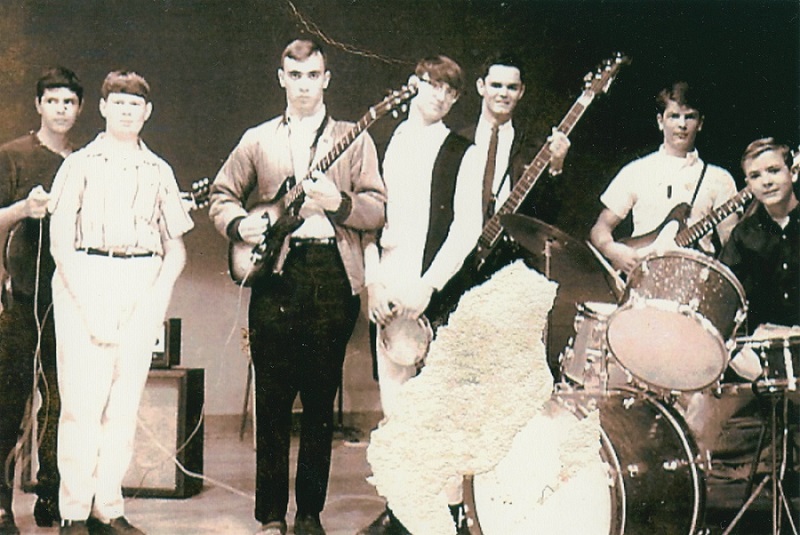
Robert and Richard formed Da Fings with good friend Steve White (on his newly purchased Gibson Melody Maker) while the Warren brothers (Mike and Greg) strummed bass and guitar, respectively. Also included were Eddie Bryant with his Farfisa organ / Fender Bassman amp combo and Larry Daws appearing occasionally on tambourine. This was a great first attempt but coordinating so many players proved difficult and after a few dances, Mike Warren dropped out followed soon after by brother Greg. Fortunately, Steve White was more than ready to answer the call on bass.
A year older than Robert, White was a gifted trumpet player, but also had talent as a multi-instrumentalist. Robert recalls that “when we lost the bass player, well Steve just picked it up in no time. He was so good like that – such an excellent musician.” This new lineup of Robert, Richard, Steve and Eddie were to quickly become a tighter, more cohesive unit.
Lacking a garage on the Wills’ Seventh Street home, the band would have to settle for being a mostly back bedroom affair. Shows happened whenever and wherever and the band primarily worked the house party circuit in Calhoun and nearby Glenville. Better gigs did materialize, though, that brought the band out of their friends’ basements.
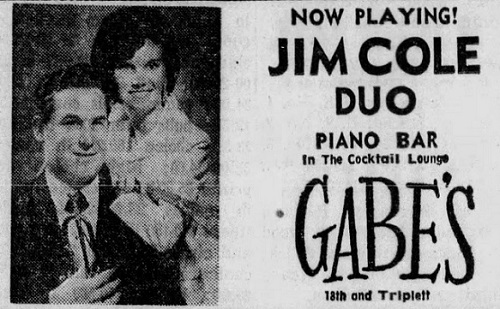 Their largest show to date was held in November 1966 at Calhoun’s Fall Festival. By then, the boys had adopted the name Sir Arthur and Company (a clear nod to the British Invasion sound they were pursuing). Interestingly, the same bill showcased Jim Cole and his wife Earlene. Jim was the Calhoun band director and as a duo the couple played nights in Owensboro and Evansville working clubs such as the Turf Room, Club 300, Gabe’s, the Lawndale Lounge, and the Little Brown Jug. Adept at playing trumpet and piano simultaneously while his wife played drums, Cole would be an occasional mentor to the group and Steve White (now a college freshman at Kentucky Wesleyan) would sit in with the duo on several occasions.
Their largest show to date was held in November 1966 at Calhoun’s Fall Festival. By then, the boys had adopted the name Sir Arthur and Company (a clear nod to the British Invasion sound they were pursuing). Interestingly, the same bill showcased Jim Cole and his wife Earlene. Jim was the Calhoun band director and as a duo the couple played nights in Owensboro and Evansville working clubs such as the Turf Room, Club 300, Gabe’s, the Lawndale Lounge, and the Little Brown Jug. Adept at playing trumpet and piano simultaneously while his wife played drums, Cole would be an occasional mentor to the group and Steve White (now a college freshman at Kentucky Wesleyan) would sit in with the duo on several occasions.
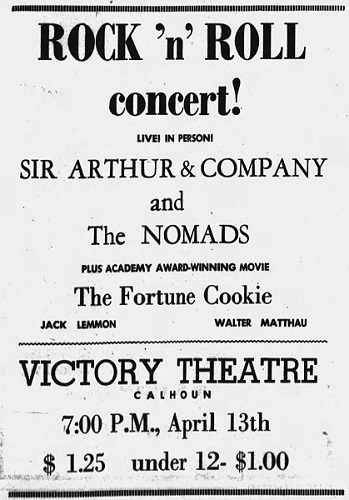 The late spring of ’67 found Sir Arthur & Company thinking big. Tired of small shows, the boys organized a memorable concert at the Victory Theatre with the popular Owensboro band the Nomads. The Victory’s wide, narrow stage made owner Darrell Moseley especially nervous and he did little to put the musicians’ minds at ease.
The late spring of ’67 found Sir Arthur & Company thinking big. Tired of small shows, the boys organized a memorable concert at the Victory Theatre with the popular Owensboro band the Nomads. The Victory’s wide, narrow stage made owner Darrell Moseley especially nervous and he did little to put the musicians’ minds at ease.
So Moseley comes around. We thought maybe he was going to give us a pep talk or something. He just says ‘Don’t rip my movie screen!’ – Steve White
Spurred on by the successful packed show at the Victory the band was looking for the next challenge. For months Robert had polished his original songs and now with several in hand and a notion to make a record, the hunt was on for a suitable studio in the region.
With Calhoun essentially equidistant between Owensboro and Central City it would seem the much larger city on the Ohio River would have been an easy choice. Certainly, Leroy Woodard’s Twin-Spin label was releasing 45s from garage bands like The Tempos, The Rogues, and Casuals Incorporated, but the reality is that many of the top bands in that town were recording in Nashville. At a tenth Owensboro’s size Central City would seem the underdog to anyone unfamiliar with the musical heritage of the coal-country town, but the boys had word-of-mouth on Raymond Rich and turned South instead of North on Hwy 81.
Muhlenberg County in the 1940s, 50s and 60s boasted as much musical talent per capita as any county in the state. Beyond native superstars such as Merle Travis and Don Everly, there were enough regional players to allow WMTA’s Bobby Anderson to record and release more than a dozen offerings on his Summit and Royce labels amongst others. When furtherance of his own career caused Anderson to move on he left a void that Raymond Rich was well-positioned to fill.
Raymond was a songwriter and performer for years with brother James “Spider” Rich, but now in his 50s he had stepped back from performing. For 1967 Kentucky, his studio was reasonably state-of-the-art with several pieces purchased as RCA castoffs as the Nashville studio upgraded. His focus had grown well beyond the initial purpose of making demos for Spider and younger brother Dave Rich to finding new talent. The trio from McLean County was such a talent.
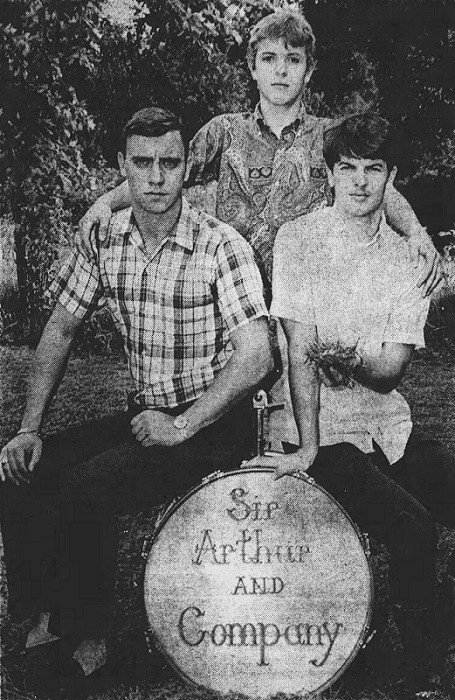
The summer taping of 1967 with Rich wasn’t without a few glitches. Keyboardist Eddie Bryant dropped out on the eve of the session leaving Robert scrambling to learn the songs on his mother’s Lowrey organ and arranging for a loan of a Baldwin portable to take to the studio. Once there (and with teenage heads full of big ideas) the Sir Arthur & Company session proved to test the limitations of both Raymond Rich’s equipment and patience.
I could play guitar, then organ, then sing. The overdubbing process drove Raymond Rich bonkers, and he frequently ‘accidentally’ forgot to engage the Sel-Sync [Ampex’s Self-Synchronous recording] device, which made the tracks aligned in time, so we had to redo the tracks. Some of the songs drove him bonkers, too. They were way too far out for him… Robert Wills
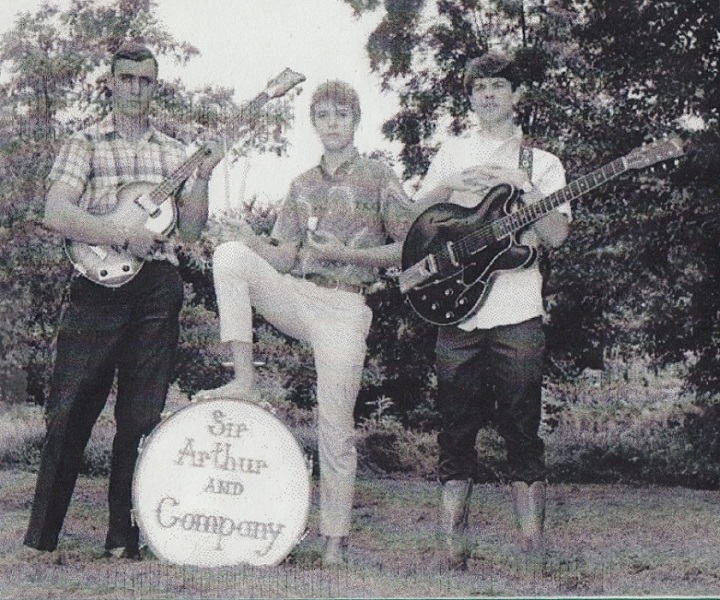
The session successfully yielded “Julie” and “Next Time”, which the boys would self-release in early August 1967. Robert astutely calculated not many locals would be familiar with the California-based band Love and tweaked their band logo slightly for the Sir Arthur & Company label design. The July pressing by the QCA plant in Cincinnati was 500 copies.
The ‘sweet and unruly’ namesake A-side is a soft love ballad meant to have foot-in-the-door appeal as a hopeful launching point to garner some label interest for the boys beyond the region. It is a nice example of the vocal sound the boys had developed and offers a preview of the type of emotive vocalizing that they would explore again both on and off the record.
Filtered through modern ears and fifty years, it is the B-side “Next Time” that now grabs the modern collector’s interest. Richard’s drum intro leads into a classic garage rocker with Robert delivering a mix of exasperation and desperation on vocals:
I thought that I loved you
with the patience of Job
I couldn’t meet up to
the bargain you drove
You should be one to brag
you made love a total drag
Now don’t cry
you’re only forcing tears from your eyes
This gives way to tight harmonies and a stern warning:
There’s not gonna be a next time for you and me – no, no, no, no, no, no…
The songs could have died on the vine. Copies were sold at the local Calhoun Drug Center and at Wax Works in Owensboro. The 45 garnered a few spins on the radio, but stood the chance of being nothing more than a treasured memento for family and friends; however, Raymond Rich heard something marketable even if the actual market didn’t.
The first trip to Central City was on Sir Arthur’s dime, but Rich arranged for follow up sessions for the boys to record more demos. Including the original session, the cuts numbered roughly a dozen with the majority of them written by Robert. As the weather cooled, interest in the trio was heating up.
Both Raymond and Spider Rich had strong friendships with Chet Atkins. In the late 60s Atkins’ ear was a direct pipeline to RCA and Chet trusted the brothers. After all, Spider had delivered RCA their talented brother Dave Rich in ’55 (who ultimately gave up his contract for the ministry) and Boots Randolph and an early version of “Yakety Sax” (co-written by Spider) back in ’58. With a clear focus on shifting into more pop and rock, Chet agreed to an audition and RCA penned the trio to a three-record contract on April 24, 1968.
Richard Wills vividly recalls that first May session:
Our dad took us down and we arrived at Studio A, a large room somewhat similar to the one the Beatles recorded in at Abbey Road. We met Chet and got to watch sessions underway by Waylon Jennings and Skeeter Davis, and listen to playbacks of Floyd Cramer and Junior Samples in the control room.
At our session the next morning, we met our producer, Felton Jarvis, a very unassuming guy who let it slip that he had a session with Elvis the next day. I didn’t let it slip that I thought he was bullshitting me. Later we learned that he was producing all of Elvis’ sessions in those years. When our time came, we played the instrumental tracks in the big studio, and then added our vocals. We listened to the playback, and went on our way.
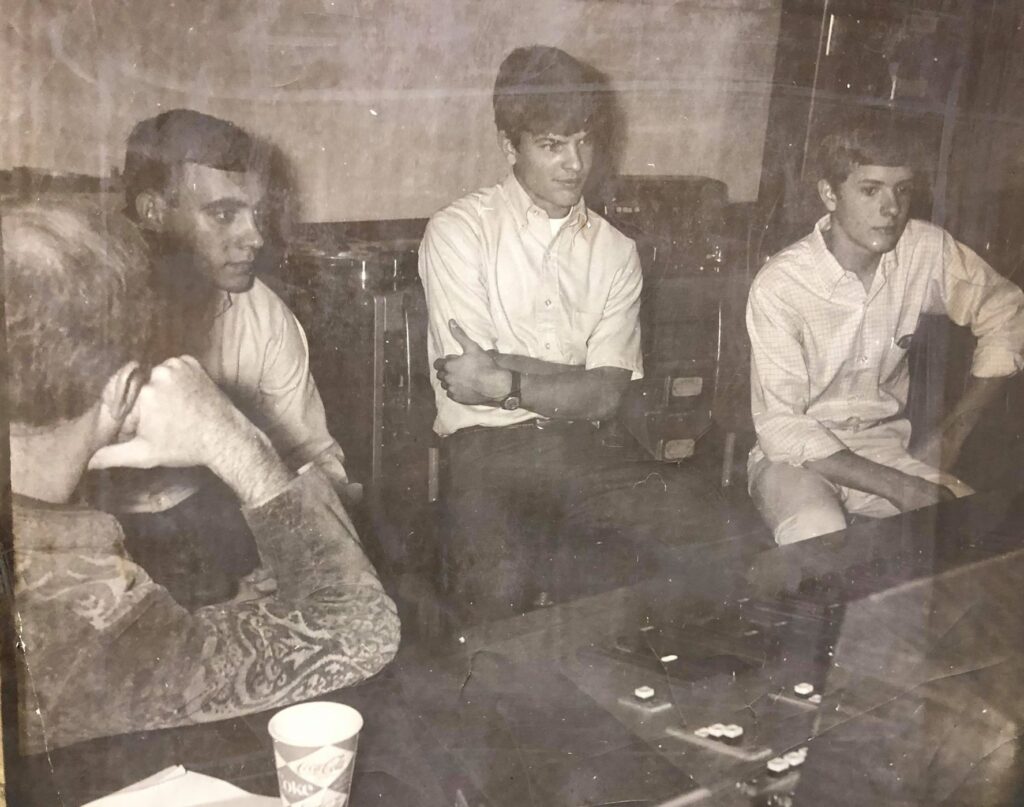
The Sir Arthur and Company audition was obviously a success, because within a couple months the band received a call back for the actual recording session. What should have been a triumphant return to Nashville for the conquering heroes felt more like death by a thousand cuts. Much had changed and more changes were coming.
We were no longer being produced by Felton Jarvis, but had been assigned to Danny Davis, who had just transferred to Nashville from New York, where he had been producing artists like Connie Francis. We were not surprised when he announced to us that he didn’t like rock ’n’ roll. The feeling was mutual—we didn’t like him.
RCA had also decided that we would not be recording one of Robert’s original songs. We spent an afternoon in the office of Danny Davis, listening to demo records by major songwriters such as John D. Loudermilk and others. We hated everything we heard, but we finally settled on a song by Barry Mann and Cynthia Weil, who had written “You’ve Lost that Lovin’ Feelin,” “On Broadway,” “We Gotta Get Out of This Place,” and “Blame it on the Bossa Nova.” What could possibly go wrong? Well, apparently Barry and Cynthia were having an off day when they wrote “Listen to the Music.” Not to be confused with the [later] Doobie Brothers hit, this song was a forgettable song for an equally forgettable movie called Wild in the Streets. Richard Wills.
Another cut came when the band was told that they would only be singing and all instrumentation would be supplied by seasoned session players. Again, Richard:
At the time we were disappointed. In retrospect, however, we should have been overjoyed. The musicians they booked for the session were also unknown to us, but only because we had not done our homework. Guitarist Wayne Moss had played the iconic opening riff on “Oh, Pretty Women” with Roy Orbison. He and drummer Kenny Buttrey had just recently played on Blonde on Blonde with Bob Dylan, and Buttrey went on to play on several of Neil Young’s most successful albums. Bassist Norbert Putnam and Pianist David Briggs rounded out the group. Had we known their reputation, we would have likely been too nervous to sing.
For the release, RCA let them know that a name change from Sir Arthur and Company was expected, but the New Dawn moniker was not the boys’ first choice. The whole affair slowly became David versus Goliath. Despite Steve’s steely-eyes and two determined wills (pun intended), when Goliath controls the purse strings the fight is over before it begins.
Still, RCA pressed “Listen to the Music” and in a small victory it was coupled with Robert’s original song “Someday” from the band’s first ‘practice’ session at RCA under Jarvis. It seems the “Listen to the Music” session ran long and the studio musicians never got around to recording another of Robert’s tunes. It also seemed RCA was ready to wash their hands of the trio.
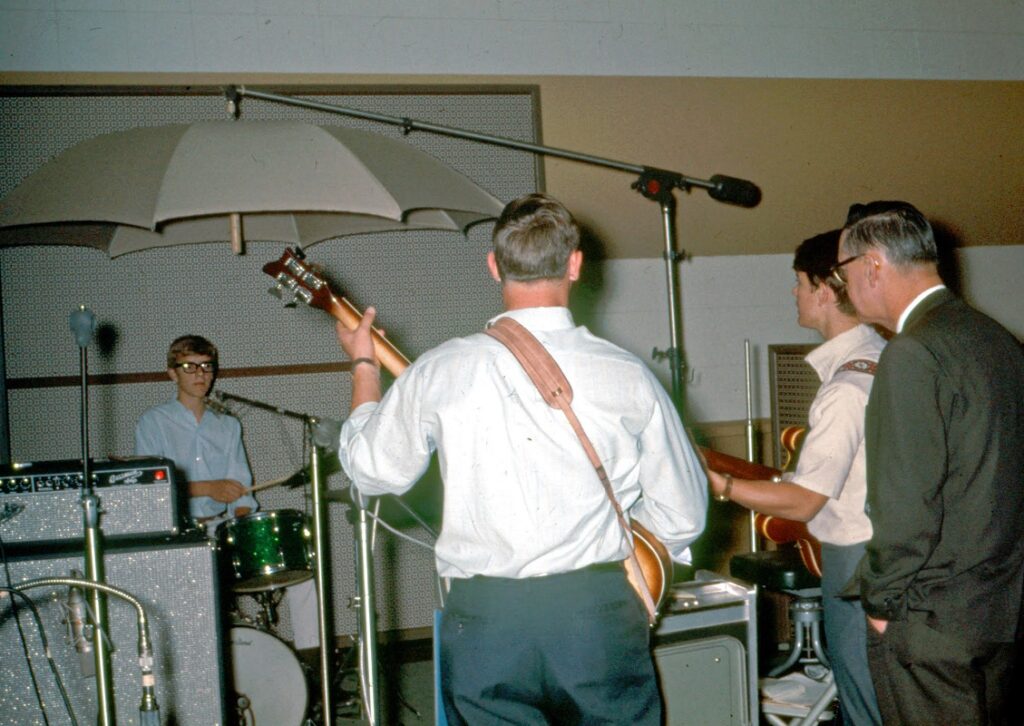
The label seemingly did nothing in the way of promotion despite pressing numerous promotional and a much more limited number of stock copies of the single. There were no splashy ads in trade magazines, no opening slots on road shows under established acts, and a quick cancellation of the remaining two records on their contract.
Any radio play was likely minimal and not the fault of the New Dawn. The studio musicians certainly had talent and the boys’ voices were on point, but except for a bit of fuzz in the guitar and a few hand claps, there is little to distinguish the New Dawn’s cover from the original cut of “Listen to the Music” by Second Time already on the market.
The flip boasting Robert’s original “Someday” showcases the mixing and melding of their voices wonderfully over a sparse arrangement. Robert recalls that during the original Jarvis session “there was supposed to be a harpsichord bit in the middle, and they wheeled in a harpsichord, which I had never touched before. I attempted to play it in, but it never worked and they called it off.” Still, the music works well and compliments the psychedelic-tinged love lyrics:
…in my mind I visualize
the foggy skies, your starry eyes
By fall of ’68, the whole RCA affair was largely forgotten in favor of academics and local shows. Robert transferred his sophomore year from Centre College in Danville to his parent’s alma mater joining incoming freshman Richard and junior Steve White at Kentucky Wesleyan.
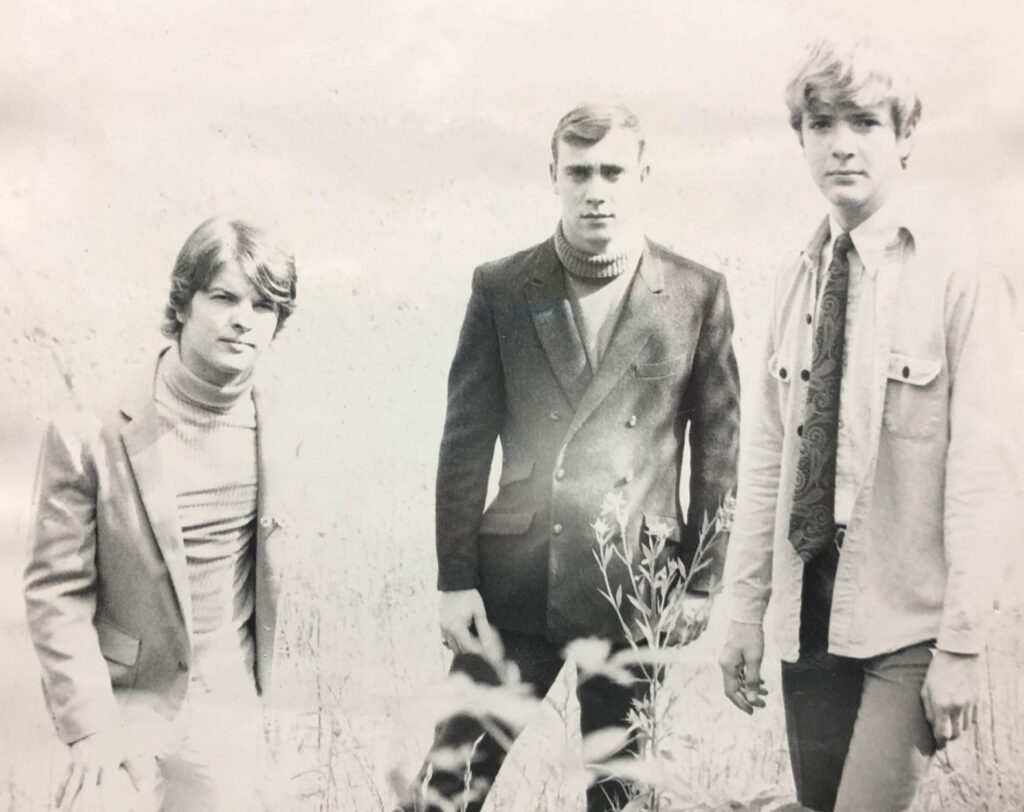
The three ultimately rented a house together thinking that it would be a practice space but it never happened. The Wills brothers drifted into a more counter-culture lifestyle and the much more conservative White headed in a different direction.
Steve White graduated in 1970 and did not give up music immediately. He married and became the Band Director at Calhoun High School. His ability to play trumpet, saxophone, piano, organ and guitar made him an invaluable asset to the school, but his heart wasn’t in it.
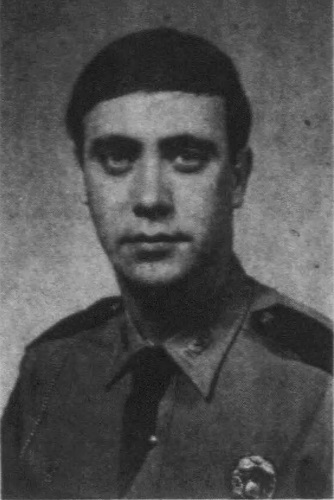
Instead, White moved into a lifelong career in law enforcement. In 1971 he did a brief stint working for the FBI before returning to Kentucky and the State Police Academy. A decorated officer, he was the Henderson’s post Trooper of the Year in 1977. He rose through the ranks and ultimately became a detective in 1985 while earning another award as Detective of the Year in 1988. He left the KSP after more than twenty years to assume a position as a Commonwealth detective for Daviess County where he would finish his career. Steve White remains near the Owensboro area.
The Wills brothers left for Canada in the early 70s and continued to carry on a strong musical partnership. Finding a new cast of musicians came easy to the brothers and led to another 45 RPM release in 1976 as Robert Wills and Ironwood. In various combinations they played up and down the Ottawa Valley doing folk/rock and both original tunes and covers from the Beatles to Bob Marley and everything in between.
Beyond music, both Robert and Richard immersed themselves into their community. Richard followed in his father’s footstep and had a lengthy career in journalism as a writer/editor for a weekly newspaper in Shawville, Quebec, and for the last two decades he has worked for an independent boy’s school most recently as Publications Editor.
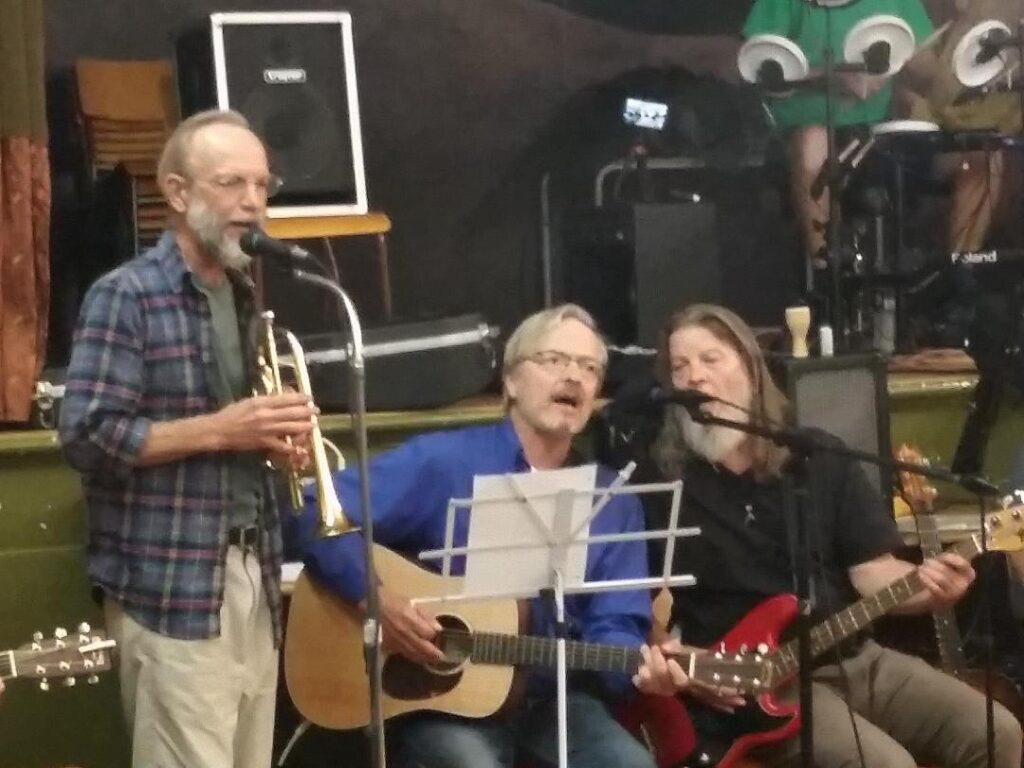
In between music gigs, Robert Wills has become a regional history buff and a close follower and participant in local politics. He has served as President of the Pontiac history museum, as a member of the Thorne Municipal Council and as a volunteer and organizer for numerous causes. He remains very active on the music scene by most recently promoting an evening of traditional music and dance with his “Hooley in the Hall”, which on any given Friday night may see two dozen musicians performing for an appreciative audience in Shawville, Quebec. Robert maintains an active youtube presence and continues to write and record material.
Discography:
45s:
Love
70741 Julie / Next Time 1967
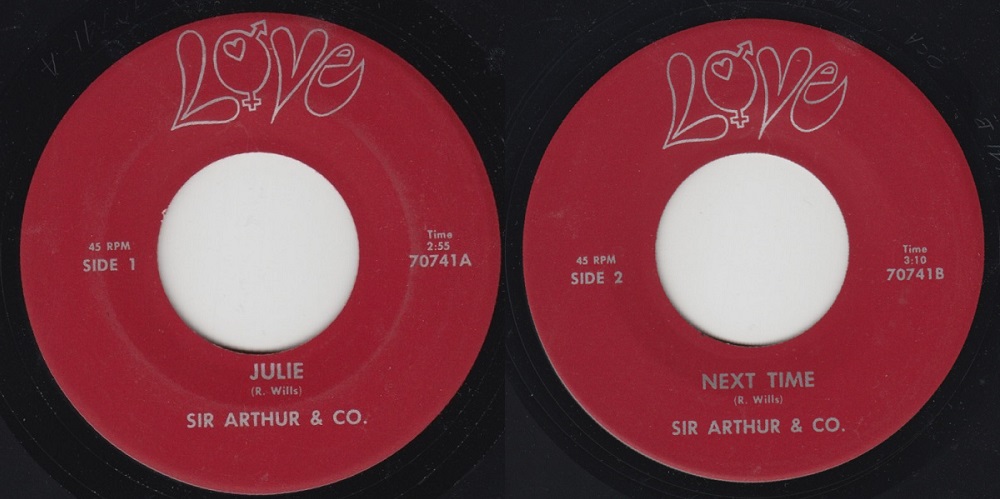
RCA
47-9569 Listen To the Music / Someday 1968
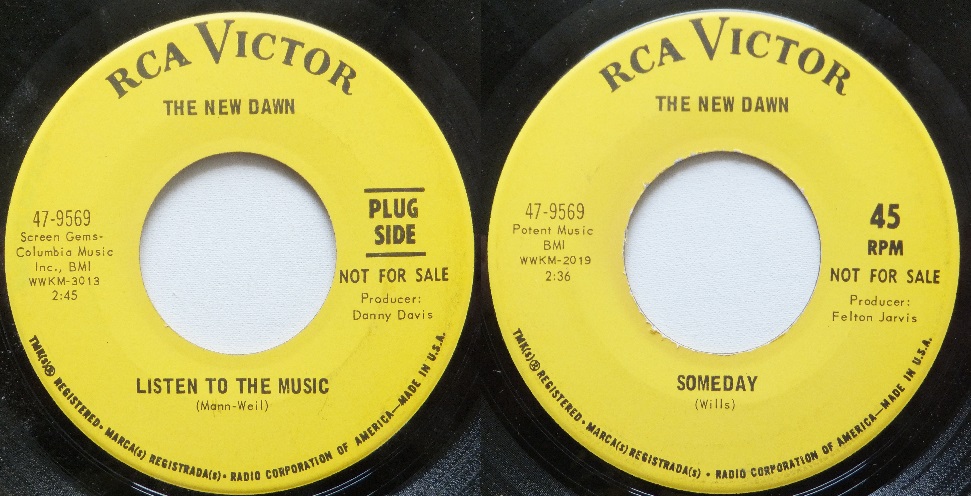
Sara Ellen’s Homemade Records
S-1 Randy the Lad / Rodeo Clown 1976
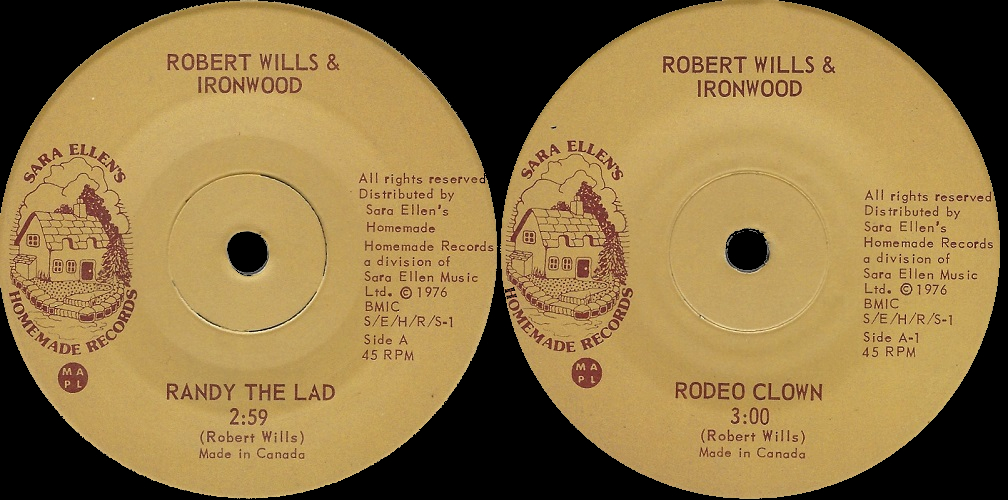
Unreleased Tracks – 1967 recorded in Central City:
She’s Still On My Mind
Miriam
The Betrayal
Beneath the River of My Mind – Steve White performance
2021 update – Gear Fab’s new 2 CD compilation Psychedelic States – Kentucky in the 60s features Next Time, Listen to the Music, and the previously unreleased She’s Still On My Mind
A GREAT article. I appreciate all of the hard work you had to do to put this together. It brought back many fond memories of that time in my life. Thank you so very much for remembering us old geezers from Calhoun Ky.
Steve, I really appreciate it and thanks to YOU for helping create such a great sound! Trying to make sure the music lives on!
Absolutely love this article! Most interesting and entertaining! Shawn, you are such a great writer. Keep up the good work!
aww, I bet you say that to all your nephews! I appreciate your tips, led me in the right direction early on. Love you!
Enjoyed reading this.
Thank you. My family moved from Calhoun to Owensboro in the summer of 1967, so this was a wonderful way for me to catch up on the goings on in Calhoun after we left.
This is a beautiful piece of writing. Even though I was “in the room where it happened” for parts of the evolution of Da Fings and Sir Arthur — at least for the back bedroom practice sessions — you dug out a lot of detail I did not recall. The images of old playbills and records are a special treat. And I really appreciate your bringing in the Coles. They had an enormous influence on my personal musical leanings and I am sure that of many other Calhoun Band members. While other school bands were marching to Sousa, Jim Cole brought us “Riffin’ the Blues” and ” Jazz on Parade”, and wrote out an arrangement of “St. Louis Blues” that I still enjoy playing. I recall the happy shock of seeing on our black and white TV Jim in a fuzzy wig singing and playing piano for a few episodes of the Soupy Sales Show taped in Owensboro. Maybe the most important gift was their teaching us not to take ourselves so seriously.
Hey Tom, really appreciate more of the Cole backstory. Robert shared enough that it let me know they were important to the budding musicians in town and I definitely wanted to pass a nod their way. Amazing how lucky we both were to have some great staff at such a small school. Been really nice to see the comments from all the people that remember the boys’ band. Best, Shawn
I enjoyed the read. I have several of the Sir Arthur and Company photos. I was a fan of all those guys!.
Also , Tom, I was a majorette during Mr Cole’s time as band director. I think I could still do that routine.
I felt very blessed by being a Calhoun High School graduate. We had many great educators , including the one and only, Mr. LDKnight.
Thanks for the memories!
Peggi Hayden Clark
Peggi, I was told by Robert you may have some photos. I tried to contact you but couldn’t find a phone number. I will email you and hope you will see that. It would be fantastic if you could share some photos!
Best, Shawn / Lexingtunes
This is a delightful article. I had to keep reminding myself that this adventurous but obscure band was us! I’ve enjoyed talking and corresponding with Shawn, and reminiscing about our common roots and love of music that stretches the envelope a bit. I now feel justified in having dragged the studio tapes around for decades and having digitized the sounds, without knowing that someone would bring it all into clear focus so much later. Congratulations, Shawn – job well done.
Even having finished this piece, Robert, I can’t help but feel like you guys existed in an alternate-reality Calhoun from the sleepy town I grew up in. Loving all the music you sent and this certainly would not have been possible except in the most rudimentary sense without your contributions and time. Sincerely appreciated – Shawn
I grew up as a close neighbor to the Wills family and I attended school with Richard & Robert. This is a superlative article about the band and brings back all those memories of days gone by! Great job and thank you.
It is my profound and distinct pleasure and honour to play with one of Richard’s current musical groups , “Cadillac Music”, here in the Montreal area. His talent, versatility and virtuosity, clearly accumulated over decades of experience, have made an enormous contribution to our efforts. Thanks so much for giving us such an in-depth look at the musical history of Richard, Robert and their band mates of days of yore. It only deepens our admiration of Richard and his terrific talent!
What a great article on hometown boys! I remember the Wills’ brothers and Eddie from church. I also remember Tom from band, as we were closer in age. Their mom played organ at church. Steve worked for my dad on the farm for a brief stint. Mr. Cole was my first Band director and really spiked my interest in music and band. Thank you for the memories!
Great memories! I was CHS class of 1968 with Richard. Spent many an hour at the Wills’ house with some of my best friends, Richard and Robert. They were smart and very talented. Wonderful to grow up with such great guys.
I’ve still got the 45.
Wow, little brother I am starstruck by your literary talent! Very interesting read. Who knew Calhoun housed such accomplished musicians! Thank you for bringing it to the forefront and taking us along for the ride.
I’m waiting on my key to the city next time I’m down that way. ha!
All of these guys were just 3-5 years older than me. I came into the pep band with Mr Cole just after the guys left Calhoun. I had the privilege of playing trumpet in the pep band with Larry Dawes a couple of times. Greg Warren and I were in a short lived Herb Alpert and the Tijuana Brass type band. My best friend was another brother, Larry Wills. I worked with all of the Wills family at the News office. I also helped eat most of their sandwich meats each weekend. This article helped me experience that part of my life over again – thank you to the Wills family.
Great article..The record business hasn’t changed much since then. They still like to take control of everyone’s music. It’s great that there is online sites now for independent musicians who can do their one thing. I’d like to add that I’ve known Richard and Robert Wills for over 30 years. They still are wonderful musicians and good friends…I have had the pleasure of playing with Richard for over 25 years in our band The Fabulous Heartbeats ..The band was created by Pat Hallett. It is a 50s Rock & Roll Band. 🎸
It’s really gratifying that these records are getting some attention more than half a century after their release. Thanks to everyone who showed some interest. Still playin’. Richard Wills
WOW, what a beautiful piece of history for Calhoun! I’m a transplant but have lived in Calhoun since 1992 and it’s my home now. I love to read about people and things that happened here. Eddie Bryant is my neighbor and has moved back into his child hood home on 7th street. Thanks for sharing!
At the first listen of “Someday” I nearly dismissed it – I thought it was just another typical sugar ballad from that time, although I thought it belonged to around 1965. Then I listened two times more – and I was really charmed by the clarity of vocals and by some graceful simplicity of the song. It’s really audible – that the guys are really young, and they do their best to deliver the song. To me it was almost like watching some early silent movie from a century back, some movie which miraculously contains the spirit, the essence of the time.
Wish you all the best from Russia, and peace to the world.
Great comment and I will be sure the boys see it! I think that song is very underrated. I love the lyrics and the simple delivery. Really appreciate you stopping by. Best to you in these trying times, Shawn.